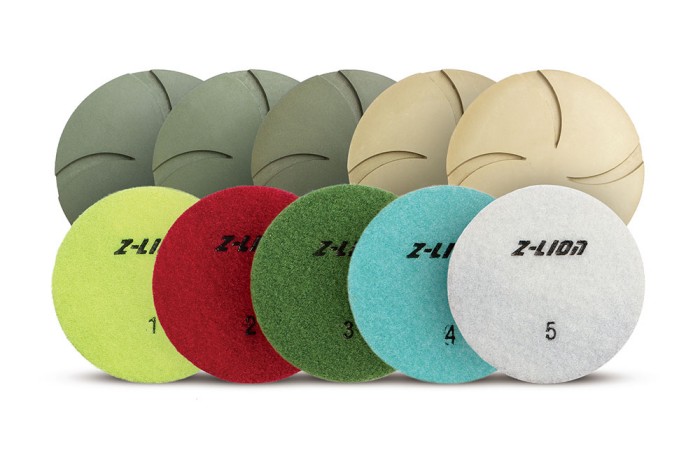
How do scratches appear when polishing concrete floors?
Grinding concrete floors is crucial to achieving a smooth, even surface, but requires careful attention to detail to avoid potential problems like scratches. Various factors and bad habits can cause scratches to appear during the grinding process, affecting the overall quality of your floor finish.
1. Failure to inspect and clean the site before construction
The construction site environment can be filled with debris, dust, and other contaminants that, if not handled properly, can cause scratches during the sanding process. Failure to inspect and clean the floor before construction can result in foreign particles that can cause scratches during the sanding process. It is crucial to thoroughly inspect and clean the site to eliminate potential sources of scratches and ensure work surfaces are clean.
2. Failure to keep the site clean during polishing
During the grinding process, a clean, debris-free working environment must be maintained to prevent accidental scratches on the concrete surface. Dust, mud, cement, and gravel brought onto the site can all cause scratches if not managed properly. This is particularly important in areas prone to strong winds and sand and dust, as external influences may exacerbate the risk of scratches. Keeping the site clean, and free of debris, and limiting access to unauthorized personnel is critical to minimizing the possibility of scratches during the grinding process.
3. Use grinding discs from different manufacturers:
Manufacturers have different methods for designing segments and selecting the grit size of grinding disc segments. Although the labels are similar, the abrasives used in grinding discs may vary from manufacturer to manufacturer. Therefore, using sanding discs from different manufacturers may cause compatibility issues, resulting in scratches that are difficult to remove. Incompatibilities between grinding discs from different manufacturers can affect the uniformity and quality of the grinding process and can result in scratches forming on the concrete surface.
4. Use of floor grinders from different manufacturers:
Floor grinders from different manufacturers have different grinding forces, resulting in differences in grinding efficiency. If the floor grinder is not efficient during the grinding process, the scratches left after the grinding disc operation may be difficult to remove. Differences in grinding efficiency between floor grinders from different manufacturers can affect the consistency and smoothness of the grinding process, potentially causing scratches to form on the concrete surface.
5. No step-by-step grinding
Each stage of the grinding process corresponds to a specific grinding disc grit, designed to suppress scratches left by the previous segment. Skipping the grinding stage can cause problems and lead to the formation of scratches. It is crucial to avoid skipping the grinding stage to save time and effort, as doing so can affect the quality of the grinding process and lead to the appearance of scratches.
6. Failure to clean floors and grinders:
After each grinding stage, the floor must be cleaned immediately and any slurry or residue removed from the grinder. Failure to do so may result in the presence of diamond grit, causing severe scratches when the next disc is used. Proper cleaning of the floor and grinder after each grinding stage is crucial to minimizing the risk of scratches and ensuring a smooth, flawless surface.
7. The floor was not checked in time after each polishing, and the floor problem was not solved immediately.
In the polishing optimization stage, such as the 150# or 200# section, after polishing, workers should check the floor in time to see if there are scratches and resolve them immediately. Failure to address flooring issues promptly can cause the problem to worsen, causing more serious scratches and affecting the quality of the grinding process.
8. The grinding cross is not in place and there are dead corners.
Ensuring that the grinding process covers the entire area evenly is critical to preventing grinding dead spots and minimizing the risk of scratches. Strict and uniform grinding methods, such as the full-coverage "well" grinding method, help prevent scratches from occurring and ensure a consistent, high-quality finish.
9. The grinding machine's traveling speed is inconsistent
The travel speed of the grinder plays a vital role in achieving an even grind. Inconsistencies in walking speed, such as changes between fast and slow movements, can result in uneven surfaces. This irregular movement can cause uneven surfaces, causing scratches and affecting the overall quality of the grinding process.
10. Machinery and heavy objects are piled randomly during cross-construction.
During multi-step construction processes, workers often perform cross-construction activities, that is, perform different tasks simultaneously in the same area. However, the random stacking of machinery and heavy objects during cross-construction may cause deep scratches on the ground. Heavy objects, if placed or secured incorrectly, can cause serious damage to the concrete surface, causing scratches that are difficult to remove.
-
Online service
-
Official wechat
account
-
QQ:40933769
-
E-mail:
sales@z-lion.com
Online service
Please feel free to give your inquiry in the form below. We will reply you in 24 hours.

